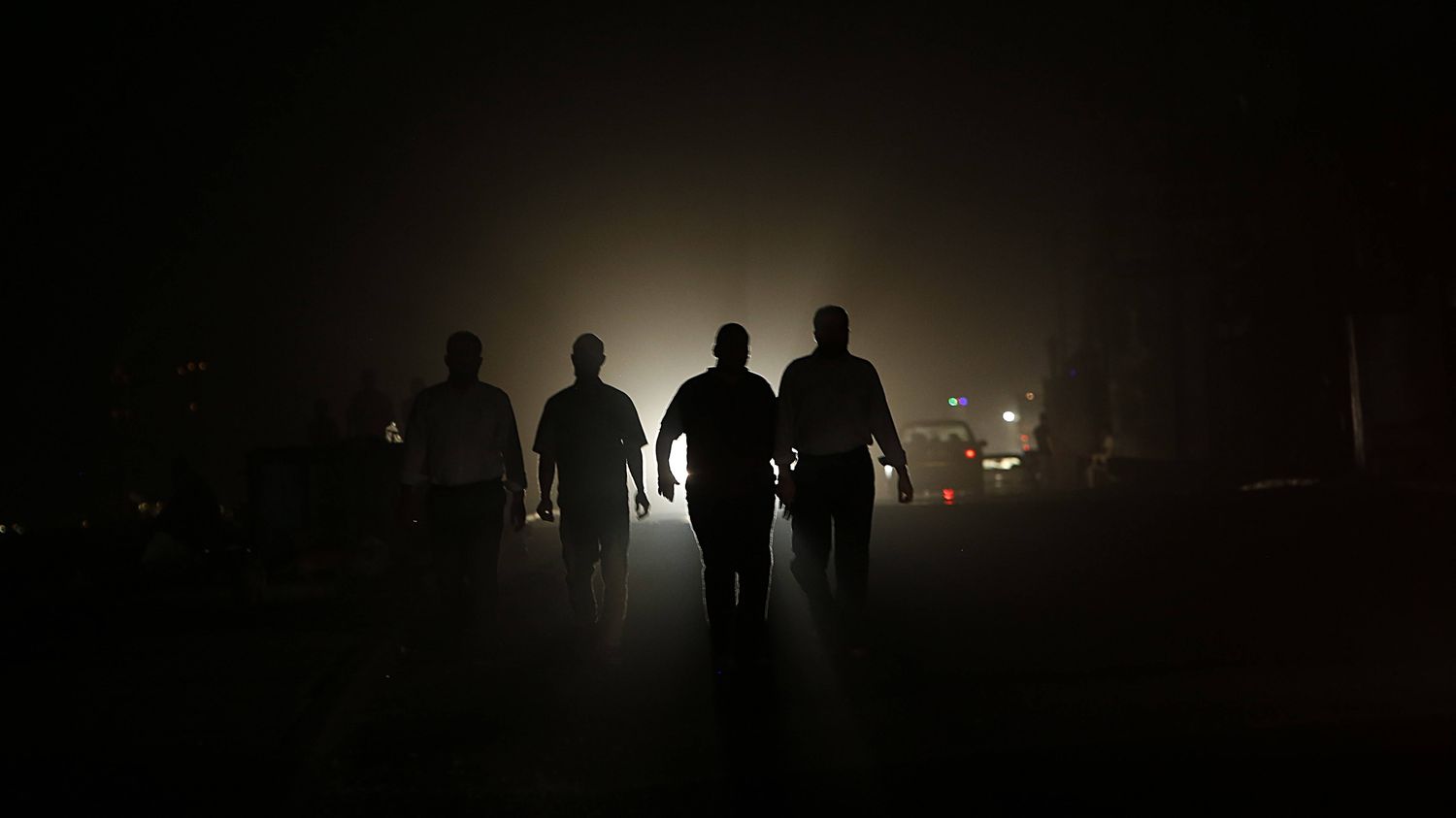In retaliation for the terrorist attack carried out on its soil by the Islamist movement, the Jewish state imposed a total siege on the Palestinian enclave. Deprived of fuel, the territory’s only power plant stopped operating. For the 2.4 million Gazans, electricity is lacking.
Israel was already subjecting the Gaza Strip to a land, sea and air blockade, in retaliation for the arrival of Hamas to power in 2007. But since October 9, the Jewish state has imposed a total siege on the Palestinian enclave, in responds to the deadly attack by the Palestinian movement against Israel on Saturday October 7. The 2.4 million inhabitants of the territory lack water, food, but also electricity.
>> War between Hamas and Israel: follow the situation live
Power cuts had already been frequent for years in the Gaza Strip, but the situation has deteriorated in recent days, as evidenced by images from the Suomi NPP satellite, operated by NASA. Day after day, provided the sky is clear, it is possible to follow the evolution of the brightness of cities during the night. Comparing recent photos, Monday October 16, with those taken a month earlier, September 15, the map reveals a territory plunged into darkness.
For its part, the United Nations satellite center (UNOSAT) published on Tuesday October 17 an assessment of the power supply by region. The Khan Younes sector, in the south of the Gaza Strip, is the most affected by power cuts, with a light loss rate of 95%. Next come the provinces of Deir Al Balah (85%), northern Gaza (93%) and Gaza City with a rate of 85%. The blackout is almost total.
On October 9, two days after the Hamas attack in Israel, Yoav Gallant, the Israeli Minister of Defense, announced the establishment of a “complete seat” from the Gaza Strip, promising to no longer deliver water, gas or electricity. “We are not going to provide gasoline to Hamas so that it can continue to use it for its own military means. We are not going to provide electricity (…) to operate the entire arms industry of the Hamas in the Gaza Stripjustified Raphael Morav, charge d’affaires at the Israeli embassy, on franceinfo.
Gaza depends on Israel
As a result of this blockade, the only power plant in the Gaza Strip shut down on Wednesday, October 11, at 2 p.m. (local time), “lack of fuel”, according to the head of the Energy Authority of the Palestinian enclave, Jalal Ismaïl. In 2022, this plant was already only partially operating, notes the Agency for International Trade: “The full capacity of the [centrale électrique de la bande de Gaza] is 140 megawatts, but often operates on 80 MW. The total electricity demand in Gaza is around 500 MW. Egypt’s power lines have been inoperable for several years.”
The Gaza Strip is therefore dependent on Israel, which supplies the fuel that supplies the power plant and the rest of the missing electricity, or around two thirds of the Palestinian enclave’s electricity needs. Before the war, Gazans compensated for the usual power cuts using individual or collective private generators powered by fuel oil. From now on, the shortage of electricity has serious consequences on the functioning of hospitals or on that of the pumps of the running water distribution services, which draw water from the groundwater located under the Palestinian territory.
